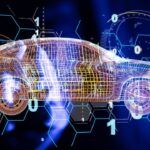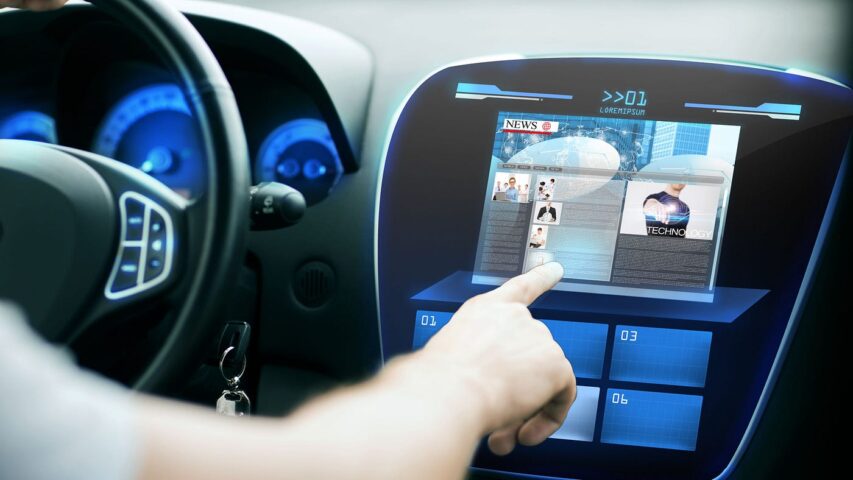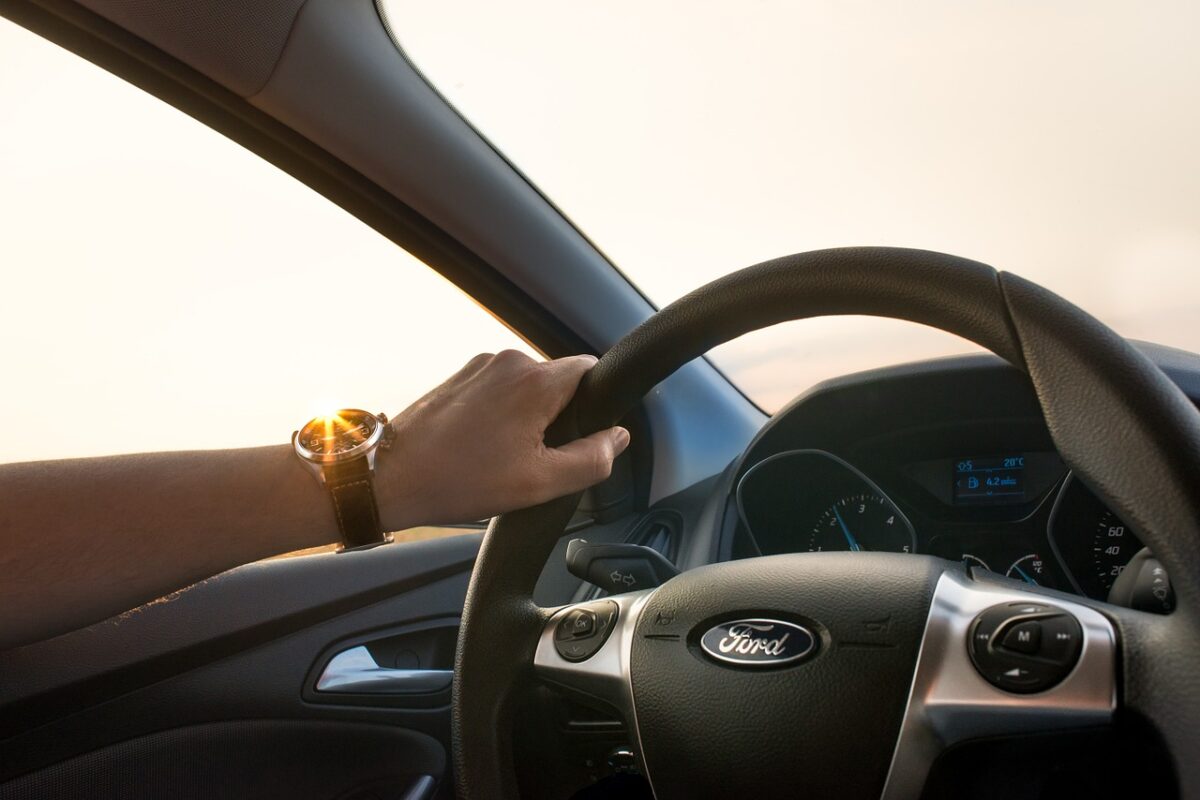
Comparing Supercars: Ferrari vs. Lamborghini vs. McLaren
April 8, 2024
The Road Ahead: Trends Shaping the Automotive Industry in 2024
April 12, 2024Driving into the Digital Age: How Technology is Transforming the Driving Experience
Introduction
In the vast landscape of technological advancements, few arenas have seen as profound a transformation as the automotive industry. With each passing year, vehicles become more than just modes of transportation; they evolve into integrated systems of cutting-edge technology, redefining the driving experience in ways once thought unimaginable. From autonomous driving capabilities to connected car features, the digital age has ushered in a new era of mobility. In this comprehensive exploration, we delve into the myriad ways technology is reshaping how we drive, navigate, and interact with our vehicles.
1. The Rise of Connected Cars
Connected cars represent a pivotal shift in the automotive landscape, where vehicles are seamlessly integrated into the digital ecosystem. These vehicles are equipped with internet connectivity, allowing them to communicate with external networks, other cars, and even infrastructure. The advent of 5G technology has further accelerated this trend, enabling lightning-fast data transmission and unlocking various possibilities for connected car applications.
Key Points:
- Real-time Traffic Updates: Connected cars leverage data from GPS satellites and traffic monitoring systems to provide drivers with up-to-the-minute traffic information, helping them navigate congested roads and avoid delays.
- Remote Diagnostics: Through embedded sensors and onboard diagnostics systems, connected cars can proactively monitor their health and performance, alerting drivers to potential issues before they escalate.
- Enhanced Safety Features: Vehicle-to-vehicle (V2V) and vehicle-to-infrastructure (V2I) communication enable connected cars to exchange data with nearby vehicles and traffic signals, improving safety by alerting drivers to potential hazards and optimizing traffic flow.
2. Autonomous Driving: Towards a Driverless Future
Autonomous driving, once confined to the realm of science fiction, is rapidly becoming a reality thanks to advancements in artificial intelligence (AI), machine learning, and sensor technologies. Self-driving vehicles have the potential to revolutionize mobility, offering increased safety, convenience, and efficiency. While fully autonomous cars have yet to achieve widespread adoption, semi-autonomous features such as adaptive cruise control, lane-keeping assistance, and automatic parking are already available in many modern vehicles.
Key Points:
- Levels of Autonomy: The Society of Automotive Engineers (SAE) has defined six levels of vehicle autonomy, ranging from Level 0 (no automation) to Level 5 (full automation). As technology progresses, we inch closer to the realization of fully autonomous vehicles capable of navigating without human intervention.
- Safety Implications: Proponents of autonomous driving argue that self-driving cars have the potential to significantly reduce traffic accidents by eliminating human error, which is a leading cause of crashes. However, concerns remain regarding the ethical and legal implications of autonomous vehicle technology, particularly in situations where split-second decisions must be made.
- Challenges and Considerations: Despite rapid advancements, several challenges must be addressed before autonomous vehicles can become mainstream. These include regulatory hurdles, technological limitations, and public acceptance. Additionally, questions surrounding liability and insurance in the event of accidents involving autonomous vehicles require careful consideration.
3. Infotainment and Connectivity
Modern vehicles are more than just means of transportation; they serve as mobile hubs of entertainment, communication, and productivity. Infotainment systems, powered by sophisticated software and touchscreen displays, provide drivers and passengers with a wealth of features and functionalities, transforming the in-car experience.
Key Points:
- Entertainment On-the-Go: Infotainment systems offer a wide array of entertainment options, including streaming music, podcasts, audiobooks, and video content. With seamless integration with smartphones and other devices, passengers can stay entertained during long journeys.
- Voice Recognition and Natural Language Processing: Voice-activated assistants such as Apple’s Siri, Google Assistant, and Amazon’s Alexa enable hands-free operation of infotainment systems, allowing drivers to control music, navigation, and other functions without taking their hands off the wheel.
- Integration with Smart Home Devices: Many infotainment systems now offer integration with smart home devices, enabling drivers to control thermostats, lights, and other connected appliances from the comfort of their cars. This seamless connectivity blurs the lines between home and vehicle environments, enhancing convenience and comfort.
4. Personalization and Customization
The era of one-size-fits-all automotive design is rapidly fading away, replaced by a new paradigm of personalization and customization. Thanks to advances in digital technology and manufacturing processes, drivers now have unprecedented control over the design, features, and performance of their vehicles.
Key Points:
- Digital Cockpits: Digital instrument clusters and customizable dashboard displays allow drivers to tailor the driving experience to their preferences, with options to adjust the layout, color schemes, and information displayed.
- Driver Profiles: Many modern vehicles support multiple driver profiles, which store individual preferences for seat position, climate control settings, infotainment presets, and more. This feature ensures a personalized experience for each driver and simplifies the transition between different users.
- Augmented Reality Interfaces: Emerging technologies such as augmented reality (AR) promise to revolutionize the way drivers interact with their vehicles. AR overlays information such as navigation directions, traffic alerts, and points of interest onto the windshield, providing real-time, context-aware guidance without distracting from the road ahead.
5. Cybersecurity and Data Privacy
As vehicles become increasingly connected and digitized, concerns about cybersecurity and data privacy loom large. The proliferation of onboard computers, wireless communication systems, and internet connectivity opens up new avenues for cyber-attacks and unauthorized access to sensitive information.
Key Points:
- Securing the Connected Car: Automakers and technology companies are investing heavily in cybersecurity measures to protect connected cars from hacking attempts, malware infections, and other security threats. These measures include encryption protocols, intrusion detection systems, and over-the-air software updates to patch vulnerabilities.
- Data Privacy Regulations: The collection and storage of vehicle data raise important questions about privacy rights and consumer protection. Regulatory frameworks such as the European Union’s General Data Protection Regulation (GDPR) and the California Consumer Privacy Act (CCPA) impose strict requirements on the handling of personal data by automotive manufacturers and service providers.
- Ethical Considerations: The widespread adoption of connected car technology raises ethical dilemmas regarding the use of data for purposes such as targeted advertising, surveillance, and predictive analytics. Striking the right balance between innovation and privacy requires careful deliberation and transparent communication between stakeholders.
Conclusion
The digital age has brought about a seismic shift in the automotive industry, transforming cars from mere modes of transportation into intelligent, connected, and personalized devices. From the rise of connected cars and autonomous driving technology to the proliferation of infotainment systems and digital cockpits, the driving experience has never been more technologically advanced. However, with these advancements come new challenges and considerations, from cybersecurity threats to ethical dilemmas surrounding data privacy. As we continue to navigate this ever-evolving landscape, it is essential to harness the power of technology responsibly, ensuring that the benefits of innovation are realized while safeguarding the safety, privacy, and security of all road users. In the digital age, the future of driving is limited only by our imagination.
FAQs:
1. What are connected cars, and how do they work? Connected cars are vehicles equipped with internet connectivity and embedded sensors that enable communication with external networks, other vehicles, and infrastructure. They leverage technologies such as GPS, cellular data, and Wi-Fi to provide real-time updates on traffic, weather, and navigation. Connected cars can also exchange data with other vehicles and traffic signals to improve safety and optimize traffic flow.
2. What is autonomous driving, and how close are we to achieving fully autonomous vehicles? Autonomous driving refers to vehicles capable of navigating and operating without human intervention. While fully autonomous vehicles capable of driving under all conditions without human oversight have not yet been widely deployed, significant progress has been made in developing semi-autonomous features such as adaptive cruise control, lane-keeping assistance, and automatic parking. Experts predict that fully autonomous vehicles may become a reality within the next decade, although regulatory, technological, and ethical challenges remain to be addressed.
3. How do infotainment systems enhance the driving experience? Infotainment systems provide drivers and passengers with a wide range of entertainment, communication, and productivity features. These systems typically include touchscreen displays, voice recognition, and smartphone integration, allowing users to access music, navigation, hands-free calling, and apps while on the go. Infotainment systems also offer advanced features such as augmented reality navigation, personalized recommendations, and integration with smart home devices, making the driving experience more convenient and enjoyable.
4. What are some privacy and security concerns associated with connected cars? As vehicles become increasingly connected and digitized, concerns about cybersecurity and data privacy have emerged. Connected cars are vulnerable to cyber attacks, including hacking, malware infections, and unauthorized access to sensitive information. Additionally, the collection and storage of vehicle data raise questions about consumer privacy rights and regulatory compliance. Automakers and technology companies are investing in cybersecurity measures such as encryption, intrusion detection, and data anonymization to mitigate these risks and protect the privacy and security of drivers and passengers.
5. How are advancements in automotive technology shaping the future of mobility? Advancements in automotive technology are revolutionizing the way we move from point A to point B. From connected cars and autonomous driving to shared mobility services and electric vehicles, the future of mobility is increasingly interconnected, sustainable, and convenient. These technologies have the potential to reduce traffic congestion, improve safety, and enhance accessibility for people of all abilities. As urbanization continues to accelerate and environmental concerns mount, innovative solutions such as ride-sharing, car-sharing, and multimodal transportation systems will play a crucial role in shaping the future of mobility.
6. What role do regulations play in the development and deployment of automotive technology? Regulations and standards play a critical role in governing the development, testing, and deployment of automotive technology. Government agencies such as the National Highway Traffic Safety Administration (NHTSA) in the United States and the European Commission in the European Union establish safety standards, emissions regulations, and cybersecurity guidelines to ensure the safe and responsible deployment of new technologies. Regulatory frameworks also address ethical considerations such as data privacy, liability, and consumer protection, providing a framework for innovation while safeguarding public interests.


